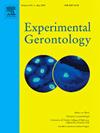Effects of recreational sports and combined training on blood pressure and glycosylated hemoglobin in middle-aged and older adults: a systematic review and meta-analysis
IF 4.3
3区 医学
Q2 GERIATRICS & GERONTOLOGY
引用次数: 2
Abstract
Background Combined resistance and aerobic training (CT) is the most suitable form of exercise training to simultaneously improve cardiometabolic profile and functional capacity in middle-aged and older adults. Recreational sports (RS) emerge as an alternative to traditional exercises to improve these outcomes that could be used as a retention and continuity strategy, promoting health benefits associated with pleasure and satisfaction during the physical activity. Objectives The aim was to conduct a meta-analysis on the effects of RS and CT on systolic blood pressure (SBP), diastolic blood pressure (DBP) and glycosylated hemoglobin (HbA1c) in middle-aged and older adults and to compare these exercise interventions to a non-exercising control group (CON). Data Sources A literature search was conducted using the databases at PubMed, COCHRANE and SciELO between July and August 2020. Study Eligibility Criteria Studies that included men and women aged 45 years, healthy or with values of baseline for SBP 130mmHg or DBP 80 mmHg or with type II diabetes, in which the participants performed RS or CT versus CON, and evaluated SBP, DBP and HbA1c. Study Appraisal and Synthesis Methods Two independent reviewers screened search results, performed data extraction, and assessed of methodological quality of studies. Random effects modeling was used to compare pre to postintervention changes in BP and HbA1c from RS and CT versus CON, and the effect size were calculated through the weighted mean difference (MD) with a 95% confidence interval (CI). Conclusions RS and CT are effective exercise interventions to improve blood pressure in middle-aged and older adults. Additionally, CT seems to be an excellent strategy to reduce HbA1c, and future studies are necessary to confirm the effectiveness of recreational sports to improve HbA1c.休闲运动和联合训练对中老年人血压和糖化血红蛋白的影响:系统回顾和荟萃分析
背景:抗阻与有氧联合训练(CT)是同时改善中老年人心脏代谢特征和功能能力的最合适的运动训练形式。休闲运动(RS)作为传统运动的替代方案出现,以改善这些结果,可作为一种保留和连续性策略,在体育活动期间促进与快乐和满足感相关的健康益处。目的是对RS和CT对中老年成年人收缩压(SBP)、舒张压(DBP)和糖化血红蛋白(HbA1c)的影响进行荟萃分析,并将这些运动干预与非运动对照组(CON)进行比较。在2020年7月至8月期间,使用PubMed、COCHRANE和SciELO的数据库进行文献检索。研究纳入年龄45岁的男性和女性,健康或基线收缩压为130mmHg或舒张压为80mmhg或患有II型糖尿病,其中参与者进行RS或CT对比CON,并评估收缩压、舒张压和HbA1c。研究评价和综合方法:两名独立的审稿人筛选搜索结果,进行数据提取,并评估研究的方法学质量。采用随机效应模型比较干预前和干预后RS和CT与CON的血压和糖化血红蛋白变化,并通过加权平均差(MD)计算效应大小,95%置信区间(CI)。结论RS和CT是改善中老年人血压的有效运动干预措施。此外,CT似乎是降低HbA1c的极好策略,需要进一步的研究来证实休闲运动改善HbA1c的有效性。
本文章由计算机程序翻译,如有差异,请以英文原文为准。
求助全文
约1分钟内获得全文
求助全文
来源期刊

Experimental Gerontology
医学-老年医学
CiteScore
7.30
自引率
2.60%
发文量
280
审稿时长
1 months
期刊介绍:
Experimental Gerontology is a multidisciplinary journal for the publication of work from all areas of biogerontology, with an emphasis on studies focused at the systems level of investigation, such as whole organisms (e.g. invertebrate genetic models), immune, endocrine and cellular systems, as well as whole population studies (e.g. epidemiology).
The journal also publishes studies into the behavioural and cognitive consequences of aging, where a clear biological causal link is implicated. Studies aimed at bridging the gap between basic and clinical aspects of gerontology, such as papers on the basic aspects of age-related diseases, are welcomed, as is research orientated toward the modulation of the aging process. Original research manuscripts, special issues, short reports, reviews, mini-reviews, and correspondence are published. Manuscripts on social aspects of aging and reports on clinical studies do not fall within the scope of the journal.
 求助内容:
求助内容: 应助结果提醒方式:
应助结果提醒方式:


